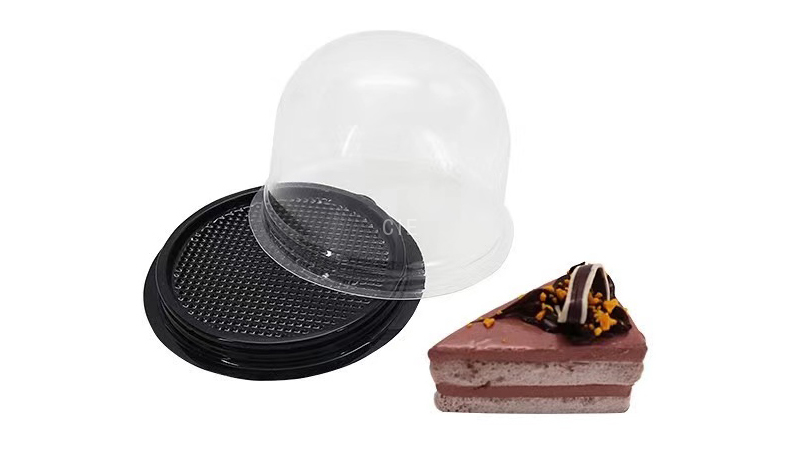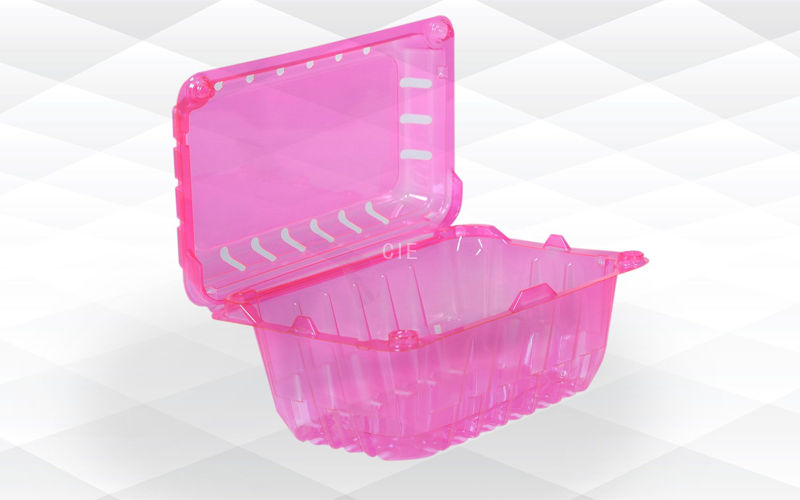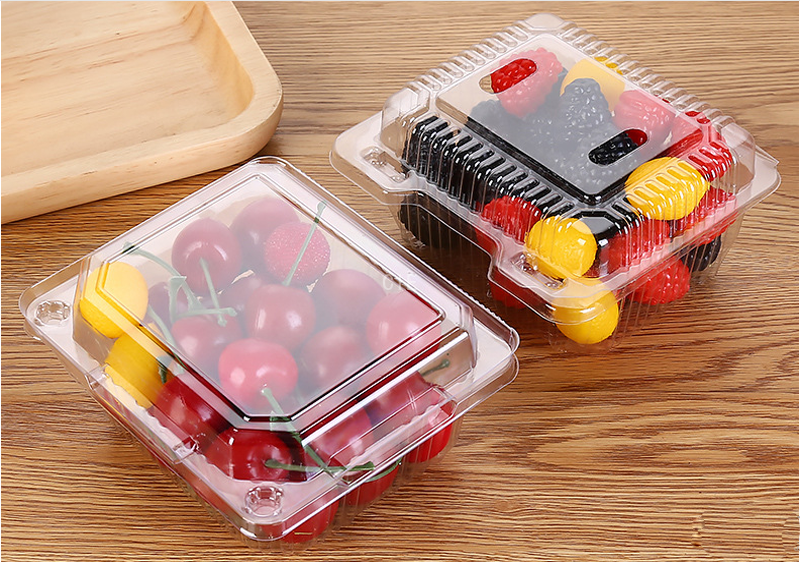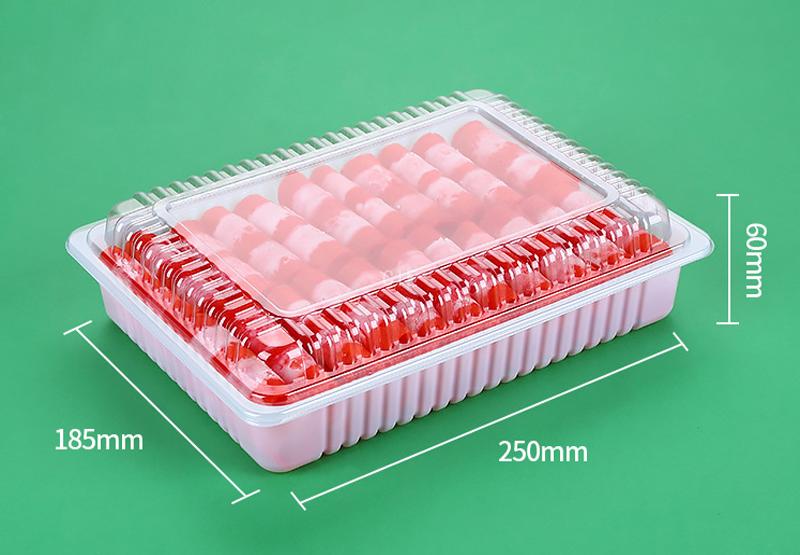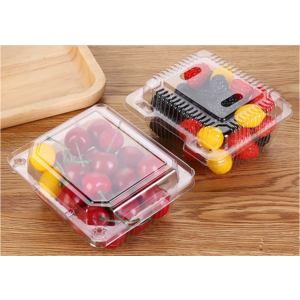


1. Blister: A plastic processing technology. The main principle is to heat and soften a flat plastic hard sheet or plate (thick plastic sheet), then use a vacuum to absorb it on the mold surface, cool it, and form it. It is widely used in plastic packaging. , Lighting, advertising, decorative vehicle and ship accessories, household appliances liner (such as refrigerator liner), door panels, lighting, luggage, decorative parts, slides, furniture, sanitary ware, lamps, toys, teaching equipment, art advertising, transportation Signs, pallet liners and other industries. Commonly used materials are: ABS. PP. PS. PVC. EPS. HIPS. PE. HDPE. PC. PMMA and other thermoplastics.
2. Blister packaging: the general term for using plastic blister technology to produce plastic products and encapsulating the products with corresponding equipment. Blister packaging products mainly include: blister, tray, blister box, synonyms are: vacuum cover, blister, etc. Blister packaging 3. The equipment mainly includes: blister forming machine (automatic blister forming machine, thick sheet blister forming machine), punch, sealing machine, high frequency machine, folding machine. Packaging products formed by packaging can be divided into: plug-in cards, blister cards, double blister, half blister, double-fold blister, tri-fold blister, etc.
4. Blister: The transparent plastic hard piece is made into a transparent plastic with a specific convex shape by using a blister process, and it is covered on the surface of the product to protect and beautify the product. Also known as blister, vacuum hood, plastic mask. According to the different forms of the blister, it can be divided into: single blister, double blister, card blister and blister card blister
4. Blister box: It is a kind of blister product with lid and bottom. The bottom and lid are connected together called half-fold blister box, and the bottom and lid separated are called sky-bottom blister box.
5. Blister tray: also called plastic inner tray, the plastic hard piece is made into plastic with a specific groove by the blister process, and the product is placed in the groove to protect and beautify the product.
6. Flocking inner support: It is a kind of blister tray made of special materials, and a layer of flocking material is glued to the surface of ordinary plastic hard sheets, so that the surface of the tray has a flocking feel, which is used to improve the quality of packaging. .
7. Antistatic tray: It is a blister tray made of special materials. The surface resistance of this material is less than 10 to the 11th power ohm. Mainly used for blister trays of electronic and IT products.
8. Blister mold: The most expensive mold is the plaster mold, followed by the electroplated copper mold, and the most expensive mold is the aluminum mold. The mold is drilled with small holes, which are used for vacuum absorption of the heated hard piece to form a blister product.
9. Blister molding: It is the blister that we often talk about. A blister molding machine is used to adsorb the heated and softened plastic hard sheet on the surface of the mold, and after cooling, it will form a concave-convex shape of the plastic.
10. Blister cutting: After blister molding, the plastic products are cut into individual products by punching the large sheets with a knife. Also called blanking, cutting, die cutting, etc.
11. Folding: One of the blister packaging products is called card packaging. The three sides of the blister need to be folded to the back with a folding machine, so that in the next packaging process, the paper card is inserted into the folding to form an insert. Card packaging.
12. Pull line: some undesirable line protrusions (not on the mold) produced during the production of blister molding need to be re-modified (reduce the height and increase the roundness) and add additional pressure molds (we call them upper Mode) to solve. When the cable is too large, it is regarded as a defective product and cannot be used for high-end blister packaging. However, in the field of parts turnover trays, as long as the cable is arranged neatly and does not affect the use function, it should be regarded as a qualified product. Pull string is also called: Laqiu, cramps and so on.
13. Scratches: There are scratch marks on the blister products, especially on the transparent blister. If the marks are too long or too large, the blister will become a defective product and cannot be used for high-end packaging.
14. Crystal point: In the production process of blister sheet, due to the fine dust in the air, falling on the heated plastic material, a kind of transparent defect is produced, especially in the production process of transparent blister sheet. If the defects are too large, they are regarded as defective products.
15. Air bubbles: In the production process of blister sheet, the heated plastic material contains air, so that the finished sheet produced contains air bubbles, especially in the production process of transparent blister sheet. If it is too large, it is regarded as defective.
16. Water ripples: In the production process of blister sheet, due to different materials and processing techniques, the surface of the finished sheet produced has water ripples, especially in the production process of transparent blister sheet, this kind of water ripples If it is too large or too much, it is regarded as defective. In general, the thicker the sheet, the more obvious the water ripples. Qualified PET materials rarely have water ripples, but most PVCs have water ripples.
17. Heat sealing: It is a kind of blister packaging process. The paper card coated with blister oil on the surface and the blister are heat-sealed with a sealing machine to form a blister card package.
18. High-frequency sealing: It is a blister packaging process that uses a high-frequency machine to generate high frequency to bond the blister and the blister together to form a double blister package.
19. Ultrasonic sealing: It is a blister packaging process that uses an ultrasonic machine to generate ultrasonic waves to bond the blister and the blister together to form a double blister package. The difference from high-frequency sealing is that ultrasonic waves can not only seal PVC , PETG material, PET material can also be sealed, and there is no electromagnetic damage to the packaged product, especially suitable for the packaging of electronic products; Side.
